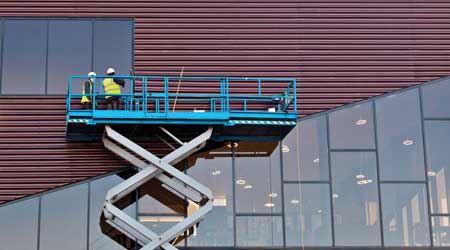 While departments generally purchase the core products in these areas, technicians also rely on managers to rent key tools and equipment, such as mobile elevated work platforms, as needed to supplement their tool and equipment arsenals.
While departments generally purchase the core products in these areas, technicians also rely on managers to rent key tools and equipment, such as mobile elevated work platforms, as needed to supplement their tool and equipment arsenals.Power in an Emergency with Generator Rental
Renting portable cooling units, lifts and generators can effectively supplement maintenance tools and tactics
A department might need to rent a generator because of an unscheduled outage, a utility company contract that allows for temporary grid shutdown during peaks or in fire season, or a planned overhaul. In such cases, the loss of refrigeration, heating, or critical business services can be costly.
The first consideration is size. Generator sizing considerations include single- or three-phase, voltage, and total kilowatts (kW). Institutional and commercial facilities that have large motors need a higher reserve capacity to prevent damage to equipment by large voltage drops. Determining total capacity is complex and requires an engineering plan and installation under qualified supervision to ensure compliance with National Electric Code.
Managers can estimate capacity using measurement, history, or square-foot methods. Measurement is done by using a clamp-on ammeter at peak power to measure all service panel legs and adding them. Divide this total by three for three-phase and by two for single-phase. The result is multiplied by the voltage and divided by 1,000 to get the total kW. The total is multiplied by 1.25 to provide a 25 percent reserve capacity.
The historical method uses utility bills to find the highest peak demand and multiply this total by 1.25 for reserve capacity. If managers anticipate extensive motor loads, adding the largest motor’s startup load in amps multiplied by the voltage, adding the amps of other devices multiplied by volts, dividing this total by 1000 will produce the total kW power. Multiply this total by 1.25 for 25 percent reserve capacity, and add the startup loads and running loads.
To size a generator, add all the connected loads. The total is the generator size needed. A 60,000 W generator will deliver 60,000 W of continuous power on LP gas and 55,000 W of continuous power on natural gas. If the unit is needed for standby duty, automatic switching is essential for preventing a loss of power during an outage.
The square-foot method helps in estimating power in non-production commercial applications, such as retail spaces. Managers can calculate the load in kW by adding 50 kW to the square footage and multiplying by 10. For a 10,000-square-foot retail space, the calculation would be: 10,000 square feet multiplied by 10, divided by 1,000. This total, 100 kW, plus 50 kW equals an estimated load of 150 kW.
Thomas A. Westerkamp is a maintenance and engineering management consultant and president of the work management division of Westerkamp Group LLC.
Related Topics:












